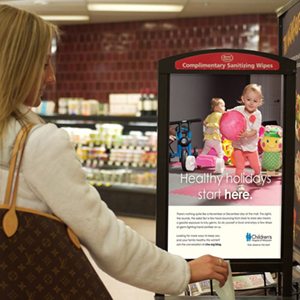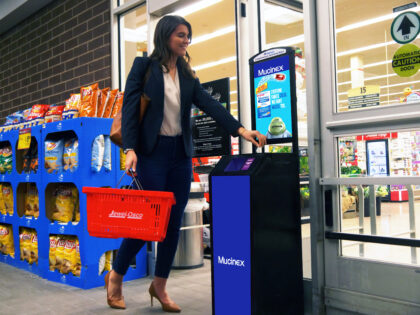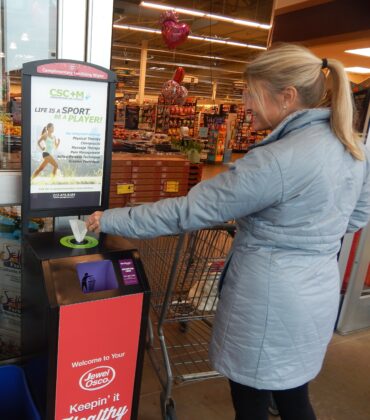With the healthcare industry becoming increasingly competitive, doctors, medical clinics, and hospitals are spending more and more on advertising to attract new patients.
If you are looking to get the most out of your medical advertising campaign, this article will break down the best strategies and latest trends for medical service promotions.
What Is Medical Advertising?
Medical advertising describes all the different advertising channels that marketers use to promote healthcare products and services. There are a variety of mediums that can be used for medical advertising, such as print ads, online ads, billboards, or even email marketing.
The Difference Between Medical Marketing and Advertising
Medical marketing is an umbrella term that refers to any strategic efforts healthcare providers use to promote their brand. These efforts could include public relations, market research, and customer relationship management.
Medical advertising is actually a subset of medical marketing that solely focuses on finding the optimal advertising channels to reach and influence more potential patients or customers.
How do you advertise medical products and services?
OOH
Out-of-home (OOH) advertising mediums include things like billboards, in-store ads, and transit advertising. This advertising channel seeks to reach consumers while they are in public and engaging with their surroundings.
OOH advertising is great for reaching a broad audience and improving general brand awareness. These non-digital ads cast a wide net but struggle to target specific consumer groups.
DOOH
Digital-out-of-home (DOOH) advertising is a lot like OOH advertising, except it makes full use of the latest technology to increase consumer engagement and precise targeting capabilities.
For example, digital wellness billboards that offer shoppers sanitizing wipes below a prominently featured advertisement have been shown to drive impressive levels of engagement for healthcare brands. Digital wellness billboards located at storefronts and pharmacy wait areas can be equipped with interactive elements, such as screens that let shoppers sign up for a vaccine appointment.
What’s great about DOOH advertising channels like wellness billboards is that they can be equipped with geofencing and retargeting tools. Both of these tools use the anonymized data of shoppers to deliver preprogrammed ads to their mobile devices while they shop and once they’ve left the store. If you’re looking for an easy way to synergize your online and physical advertising, digital ads are a good option.
Local SEO
When it comes to medical advertising, the most important thing is to get in front of your target audience. Local Search Engine Optimization (SEO) is one way to boost your brand visibility to potential patients and clients.
The goal of local SEO is to have your business show up at the top of search results when patients search for nearby doctor’s offices, clinics, or hospitals. Google has over 90% of the search engine global market share, which means you’ll want to place all your focus on optimizing your business there.
The first step to do this is to manage your Google My Business profile by claiming your listing and continually updating the account. Google’s algorithm also favors businesses with tons of five-star reviews. You can obviously bring in more reviews through good service, but putting out promotional materials to your existing patients that encourage them to review your business online will also help a ton.
Online Advertising
As society continues to spend more and more time online, it’s no surprise that marketers have developed many different online advertising mediums to reach consumers. Medical online advertising includes things like online display ads, social media advertising, and search engine advertising.
The primary benefit of online advertising is its precise targeting capabilities. Internet user data is constantly tracked, stored, analyzed, and sold to advertisers who want their ads to reach specific consumer groups.
While online advertising can certainly have your brand appear on the screen of a prospective patient, it doesn’t necessarily mean that they’ll engage with it. Many marketing experts consider online advertising to be an oversaturated market in which consumers are exposed to too many ads. One study showed that 86% of consumers have “banner blindness”, a phenomenon where people have zero recollection of online ads that appear on websites they use.
How much does medical advertising cost?
It’s essential to pick the correct advertising mediums that can deliver the best return on investment (ROI) while still staying within your budget. So, let’s look at the advertising options we’ve discussed and give some rough estimates of their associated costs.
OOH advertising costs can vary greatly depending on where the ad space is located and how many consumers frequent that area. For example, the average cost for a billboard in a metropolitan area is between $2,000 and $20,000 per 4-week period. Not all OOH ads are this expensive though– subway ads tend to cost between $75 to $500 per month.
DOOH advertising rates are generally more expensive than OOH because it provides advertisers with more interactive elements and tools to target consumer groups. Digital billboards can cost up to $30,000 depending on their locations. However, there are other more affordable digital advertising options that are better suited for medical marketing. For example, digital wellness billboards in pharmacy wait areas only cost between $500-$700 for a 4-week period.
Just like physical ad space, online advertising prices can vary greatly. For example, Google pay-per-click ads can cost just $1-2. But for more competitive keywords, these ads can cost advertisers $50+ every time a user clicks on their sponsored website.
Is advertising worth it?
In 2022, the US healthcare advertising market size reached $22B. It’s no surprise that so much money is spent on healthcare advertising because it’s been shown to generate impressive ROI when done properly.
The average advertising spend for a medical practice is approximately $1,371 a month. A massively successful marketing campaign will convert new patients and lead to $3-$5 in increased revenue for every dollar you spend on advertising. While returns like this are ideal, they aren’t necessary for the success of a medical advertising campaign. Simply breaking even over the course of your advertising campaign can still boost your brand awareness and create a durable connection with your community that will last longer than the duration of your ad space.
Medical advertising trends
As technology becomes more advanced, so do the tactics that advertisers use to target consumers. One of the most useful innovations that has seen widespread adoption is programmatic DOOH advertising.
Programmatic DOOH is an automated process of buying and delivering digital ads. It uses AI systems and algorithms to select the best DOOH advertising locations with the appropriate contextual setting. You can select a variety of factors that will trigger an ad space purchase, such as time of day, number of passersby, or even the weather.
Medical advertising has also begun to heavily rely on data analytics to deliver personalized ads to consumers online. Digital ad space vendors have access to a constant supply of internet user data that lets them deliver targeted advertisements to the ideal target audience.
It’s not just online advertising that can make use of consumer data. DOOH ads equipped with retargeting and geofencing can make great use of anonymized mobile data.
Geofencing works by creating a virtual boundary that will send a notification or advertisement to mobile devices that cross the border. Retargeting similarly uses mobile data but instead seeks to reach consumers that have already been exposed to your brand and may be more susceptible to promotional material. Let’s say that a shopper takes a wipe from a wellness billboard at their local pharmacy. The next time that shopper uses a website or search engine, they will see an ad for the same company featured on the billboard they took a wipe from.
More Patients At A Fraction Of Your Usual Ad Spend
The healthcare industry has become extremely competitive and this has led to medical care providers spending more and more on advertising. If you’re looking to get ahead of the pack, get in touch with a Terraboost agent today for expert advertising advice and a free personalized quote.
Our 120,000+ wellness billboards deliver 8.8 billion monthly engagements and are featured in the pharmacy wait areas of stores like CVS and Walgreens. We are innovators when it comes to in-store marketing and independent studies have shown that 80% of shoppers engage with our sanitizing kiosks and 50% take a coupon or brochure to learn more about the sponsored brand.



